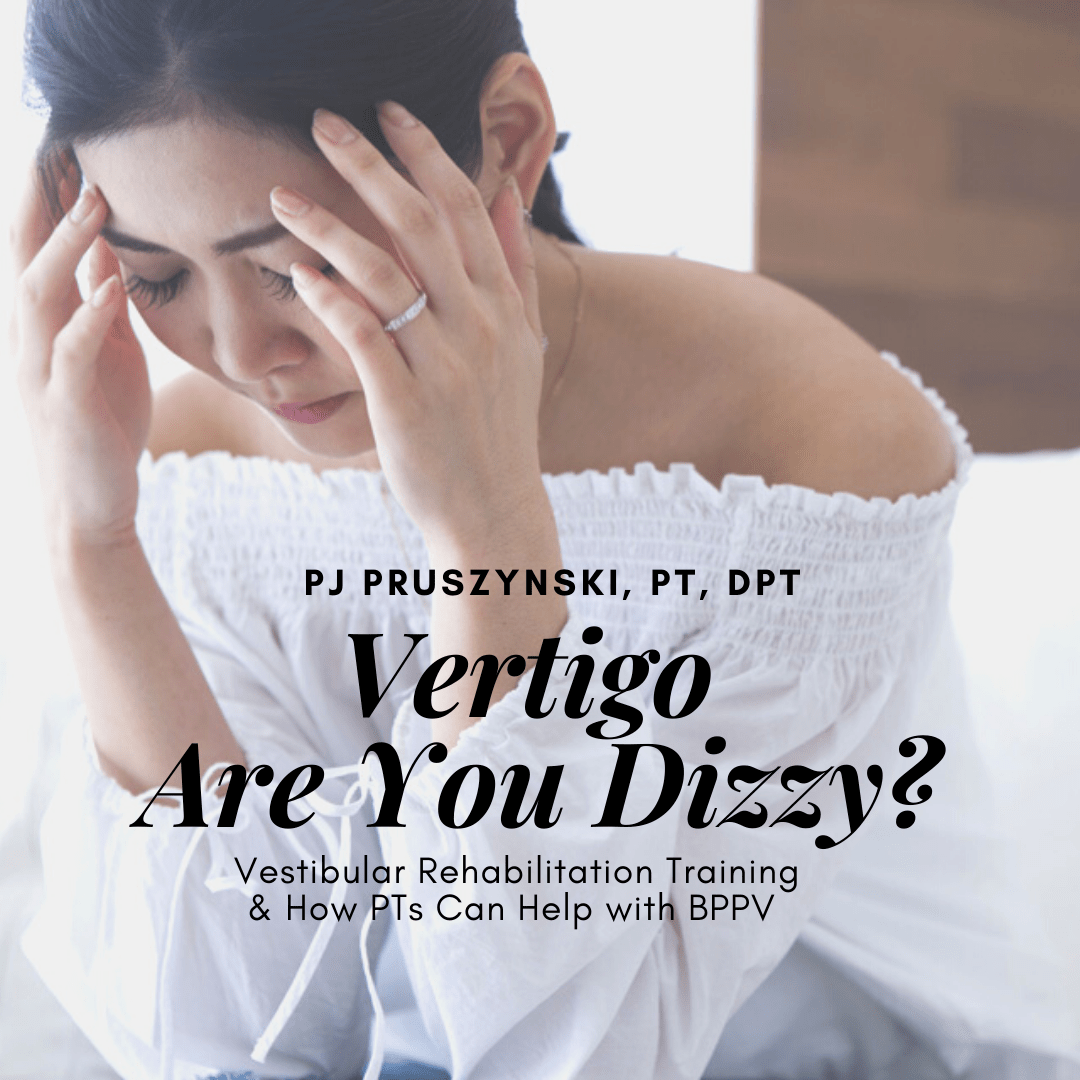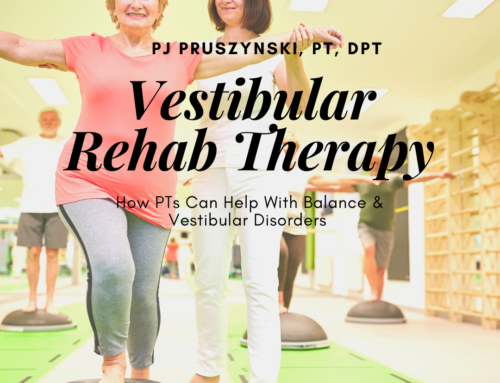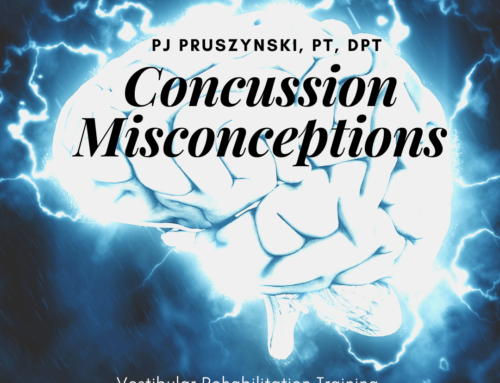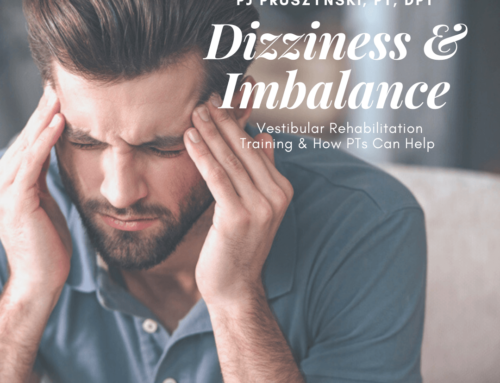Vertigo: Are you Dizzy?

Do you get dizzy or feel like the room is spinning when you lay down or attempt to sit up? If so, you may have Benign Paroxysmal Positional Vertigo (BPPV). Read on to learn more about BPPV and what Physical Therapists can do to help.
I Have Crystals Loose In My Head?
The answer is you may… but first what are these crystals everyone keeps mentioning? Unfortunately, these crystals are not suitable for jewelry nor do they contain magical qualities. The vestibular system is your balance organ in the inner ear that contains calcium carbonate otoconia, which are referred to as “crystals”. When those crystals get loose, you may become dizzy.
A Quick Anatomy Lesson:
Otoconia (the crystals) are housed on top of a gelatinous membrane in the utricle and saccule in the inner ear that have hair cells that send signals to the brain that provide information on acceleration of the body. The hair cells are very sensitive to changes in gravity. When otoconia get stuck in the semicircular canals, people can feel dizzy. Based on the orientation of canals, the posterior canal is most commonly affected due to its proximity to the utricle.
What is Benign Paroxysmal Positional Vertigo?
Benign Paroxysmal Positional Vertigo (BPPV) is a condition where people experience transient feelings of room spinning vertigo, typically when laying down or when they attempt to sit up in bed. The sensation of vertigo is accompanied by nystagmus, or quick turning and flicking of the eyes. Nystagmus occurs due to nerve connections between the semicircular canals and the eyes. These connections are useful when you are trying to maintain focus with your eyes while your head is moving. However, this connection becomes faulty in BPPV, because the loose crystals are telling your eyes you are moving when in fact you are not. The cause of displacement of the otoconia crystals can be due to trauma to the head or neck (concussion or whiplash) or it could occur with no known cause (idiopathic). There are theories regarding why otoconia migrate to the canals when no trauma has occurred. Some believe it is a degenerative process that is associated with normal aging, which may explain BPPV’s increased prevalence in individuals over the age of 60 years old.
Can We Put The Crystals Back Where They Belong?
Yes! Physical Therapists who specialize in Vestibular Rehabilitation Therapy (VRT) are trained in non-invasive maneuvers to reposition the loose otoconia. The maneuvers utilize the natural orientation of the semicircular canals relative to gravity to move them back to the utricle. Many people search the internet and find videos and attempt to treat their own BPPV. A word of caution: it is important that you are treating the correct canal and type of BPPV. Treatment by someone who is not trained in VRT could result in migration to canals that may be more difficult to treat than the original affected canal. Additionally, it is important for a trained professional to screen individuals for other conditions that mimic BPPV.
Dr. Patricia (P.J.) Pruszynski, Dr. P.J. as she is known, is a vestibular and orthopedic PT at One on One Physical Therapy. Dr. P.J. received training in VRT from the world-renowned Duke University course “Vestibular Rehabilitation: A Competency Based Course”, which is widely recognized as the gold standard in VRT training. At One on One PT, you will benefit from individualized attention and a personalized care plan to help you overcome your dizziness.
Let us help you stop spinning out! Call for an appointment with Dr. P.J. at 770-500-3848. For questions or to learn more, you can email Dr. P.J. at patricia@onetherapy.com.
Sources:
Otoconia and Otolithic Membrane Fragments Within the Posterior Semicircular Canal in BPPV – The Laryngoscope
Vestibular dysfunction: Prevalence, impact and need for targeted treatment – Journal of Vestibular Research
Dr. Patricia Pruszynski, DPT (who goes by P.J.) has a passion for working with patients suffering from concussions and other dizziness/vestibular disorders such as vestibular neuritis/labyrinthitis, BPPV, Meniere’s, migraines, and small vessel strokes. Dr. P.J. studied alongside experts in the field at the world-renowned Duke University’s course for management of dizziness and balance disorders. Her advanced training in manual medicine and triggerpoint dry needling compliment her specialization in vestibular rehabilitation, which allows her to take “a whole-body approach”. Dr. P.J. graduated summa cum laude from the University of Delaware with a Bachelors in Exercise Science and received her Doctorate in Physical Therapy from Emory University. She has a background in dance, track, and soccer. When P.J. is not working with her patients, she enjoys traveling, hiking, and trying out new restaurants with her husband.



